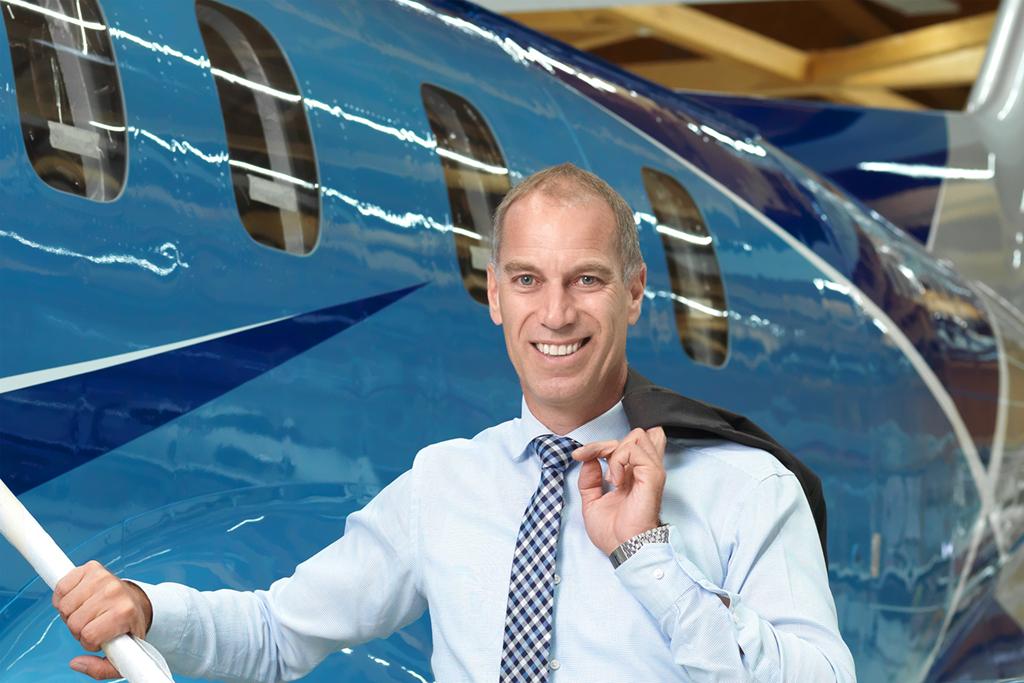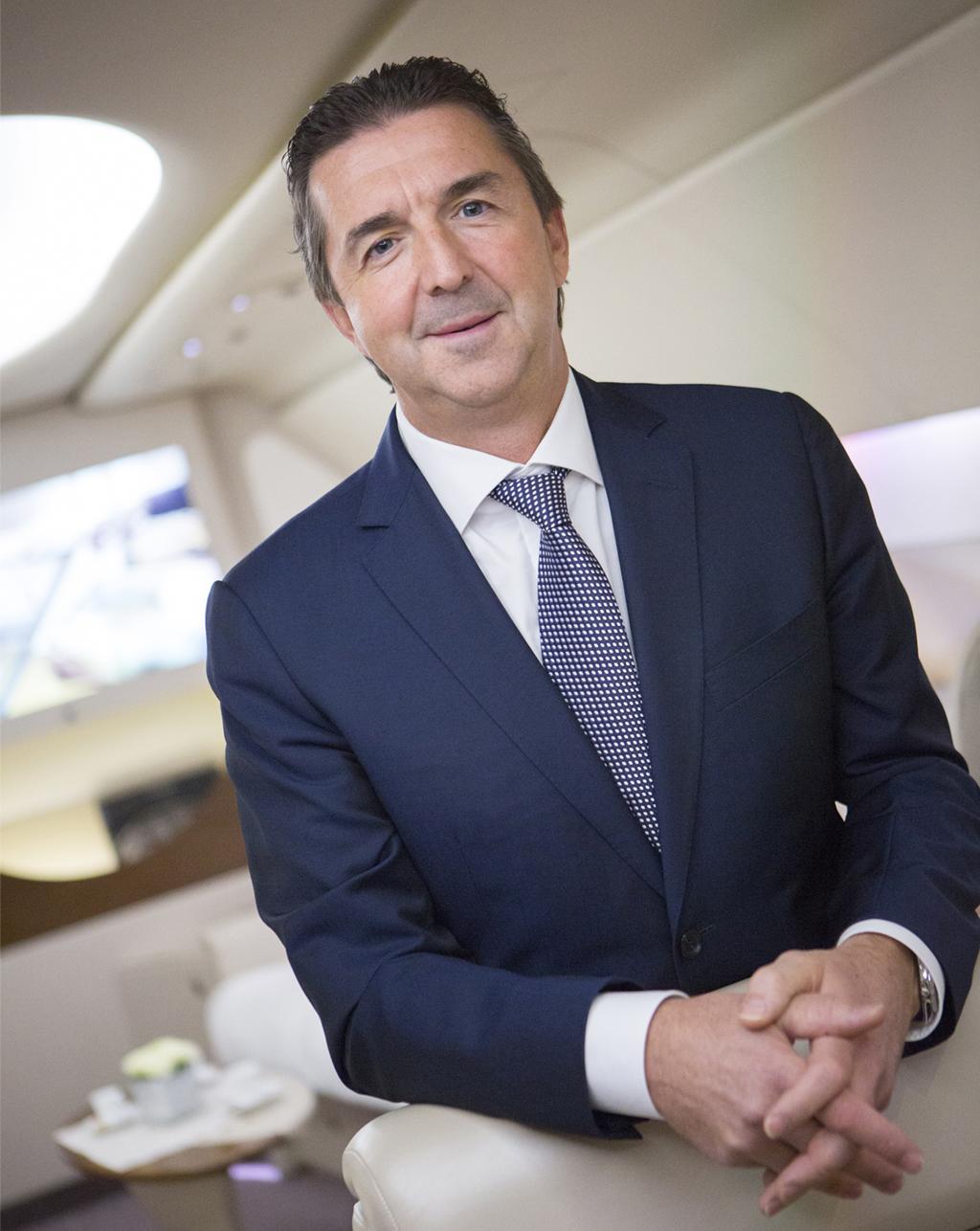
Michael Amalfitano, Embraer
Credit: Embraer
Speaking about harmonizing international regulations: “Certification authorities have always been partners by engaging and providing guidance early in our developments. Through the pandemic period, we started seeing the use of remote collaborative technologies to allow virtual testing and inspections. We believe that this will likely continue helping to reduce costs and speeding up the entire approval process,” said Michael Amalfitano, president and CEO, Embraer.

Markus Bucher, Pilatus
Credit: Pilatus
On the topic of workforce and diversity: “At Pilatus, we train 13 different skills as apprentices in the organization, roughly 150 people. Everybody should do this to actually feed young talents into our industry. … I think we have to push more in that direction and offer interesting careers and interesting technology in an industry that is a global,” said Markus Bucher, CEO, Pilatus.

Mark Burns, Gulfstream
Credit: Gulfstream
Regarding sustainability: “Every airplane that we've built in the last 20 years is more efficient in a number of ways, not just in the fuel that we burn and the efficiency of engines, but also by the aerodynamic efficiency, and by many of the systems that we built such as synthetic vision that help the airplane be more efficient. They are also huge contributors to that sustainability effort. And we've actually carried it over into manufacturing as well-- eliminating waste as we build airplanes. Because of 3D modeling and some of the robotic tooling that we use today, we can build a wing virtually defect-free now with virtually no waste,” said Mark Burns, president, Gulfstream Aerospace.

Benoit Defforge, Airbus Corporate Jets
Credit: Airbus
Discussing sustainability: “We at Airbus have always been committed to leading the decarbonization of our industry. Our ambition is to be the first to bring a zero-emission aircraft to the market by 2035. ACJ, of course, is part of the strategy and will benefit from the Airbus technology breakthrough. Then we believe that SAF has the potential to become a major driver for CO2 reduction,” said Benoit Defforge, president, Airbus Corporate Jets (ACJ).

James Detwiler, BBJ
Credit: BBJ
On the forecast for business aviation: “The outlook for aviation is strong. We only need to look at our ultra-high net worth individual customer set and see that they've weathered the financial challenges of the pandemic--and also the significant amount of first-time travelers in charter business jet operations, over a million new passengers in 2020 alone, to know that the outlook is very strong,” said James Detwiler, president, Boeing Business Jets.

Ron Draper, Textron
Credit: Textron
Talking about ongoing challenges: “We’re starting to see supply constraints, and we're starting to see inflation in raw materials and metals, etc. So, I think the industry is going to experience a supply chain tightening in the months and maybe a year or two ahead,” said Ron Draper, president and CEO, Textron Aviation.

Didier Kayat, Daher
Credit: Daher
Regarding innovation: “We have decided to increase our R&D investment despite the crisis, because we do consider that these very complex competencies need to be secure during the crisis to have a better rebound tomorrow. But not only that, we are rethinking the whole manufacturing process because you have to be more flexible. You have to integrate the whole supply chain more, like the way we do with airplanes, but also all of the end-to-end solutions,” said Didier Kayat, CEO, Daher.

Eric Martel, Bombardier
Credit: Bombardier
On diversity: “Being a more diversified company also is going to make us stronger and able to attract the best talent. We're very fortunate here in Montreal because we have a huge pool of good universities. A lot of people come from different countries to come and study in Montreal. That creates opportunities for us that we really want to capture because diversity brings new perspective, new talent, new idea. And I think this is what's going to make us more successful,” said Eric Martel, president and CEO, Bombardier.

Eric Trappier, Dassault
Credit: Dassault
Speaking of customers as advocates: “We have dedicated meetings with our customers to support the development of our business jets. They talk to us during NBAA and during EBACE and provide good declarations to show that it is really cost effective to get a Falcon, to travel, and to be able to continue to work and fly,” said Eric Trappier, chairman and CEO, Dassault Aviation.
Nine aircraft OEM senior executives opined about different facets of business aviation during a panel at EBACE Connect. Here's some of what they discussed.
